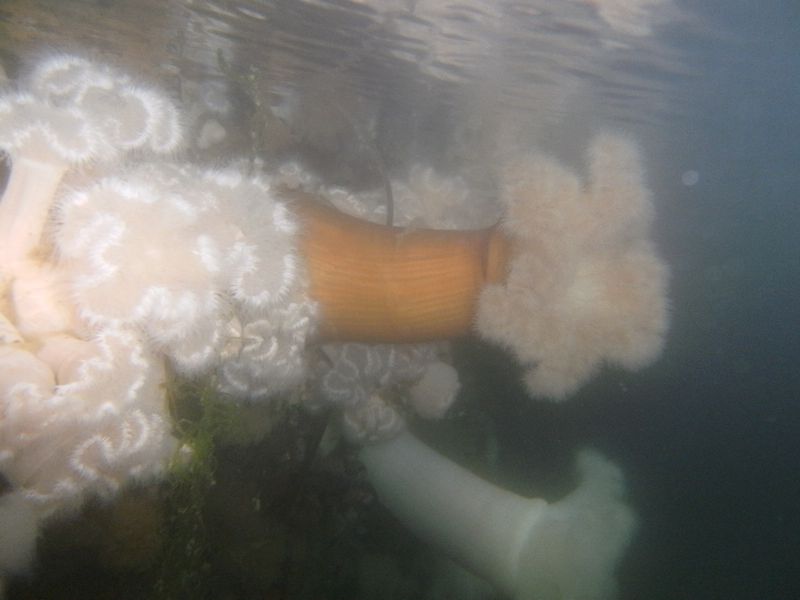Metridium farcimen Tilesius, 1809Common name(s): Giant plumose anemone |
|
| Synonyms: Metridium marginatum, Metridium giganteum | 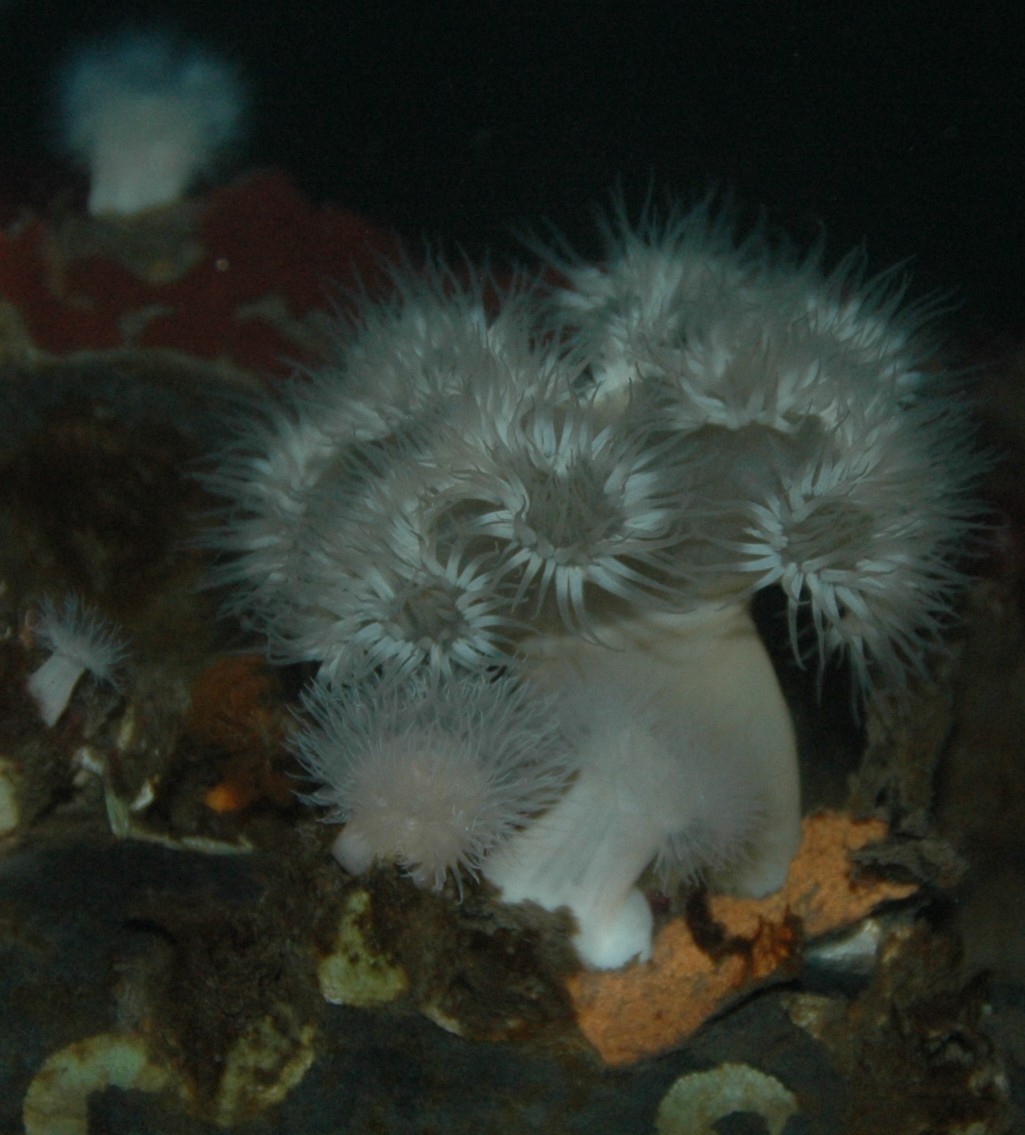 |
| Phylum Cnidaria
Class Anthozoa Subclass Zoantharia Order Actiniaria Family Metridiidae |
|
| Metridium farcimen on a dock at Anacortes, with some M. senile nearby. Height about 15 cm, crown diameter about 13 cm. | |
| (Photo by: Dave Cowles Nov 2005) | |
How to Distinguish from Similar Species:Metridium senile has a similar form and coloration but grows only up to about 10 cm tall, has less than 100 tentacles, and the oral disk is not prominently lobed.
Geographical Range: Alaska to Santa Catalina Island, CA. Especially common in Puget Sound, the San Juan Islands, and the Strait of Georgia.
Depth Range: Subtidal to at least 200 m; occasionally found intertidally.
Habitat: Attached to rocks, floating docks, and pilings.
Biology/Natural History: These anemones
live many years. This species does not seem to reproduce asexually,
as does M. senile. It
is said to be solitary, but I have frequently seen it in aggregations on
Sares Head, though perhaps not as tightly packed together as one sees with
M.
senile on docks. The acontia
do not sting the skin but could definitely sting the eyes or tongue.
This species, which can be up to 1 m tall when extended, is said to be
the world's tallest polyp.
| Return to: | |||
| Main Page | Alphabetic Index | Systematic Index | Glossary |
References: Note: References older than 1989 do not distinguish between M. senile and M. farcimen.
Dichotomous Keys:Kozloff 1987, 1996
Smith and Carlton, 1975
General References:
Brusca
and Brusca, 1978
Gotshall,
1994
Gotshall
and Laurent, 1979
Harbo,
1999
Johnson
and Snook, 1955 (as Metridium dianthus)
Kozloff,
1993
McConnaughey
and McConnaughey, 1985
Morris
et al., 1980
Niesen,
1997
O'Clair
and O'Clair, 1998
Ricketts
et al., 1985
Sept,
1999
Scientific Articles:
Fautin, D.G., A. Bucklin, and C. Hand, 1989. Systematics of sea
anemones belonging to the genus Metridium (Coelenterata: Actiniaria),
with a description of M. giganteum, new species. Wasmann J.
Biol. 47: 77-85
Glon, Heather, Vreni Haussermann, Paul E. Brewin, Paul Brickle, Sungsik Kong, Megan L. Smith, and Marymegan Daly, 2023. There and Back Again: The Unexpected Journeys of Metridium de Blainville, 1824 between the Old Oceans and throughout the Modern World. Biological Bulletin 244:1 pp. 9-24
Wells, Christopher D., Gustav Paulay, Bryan N. Nguyen, and Matthieu Leray, 2022. "DNA metabarcoding provides insights into the diverse diet of a dominant suspension feeder, the giant plumose anemone Metridium farcimen." Environmental DNA 4:1 pp. 147-156
Web sites:
General Notes and Observations: Locations, abundances, unusual behaviors:
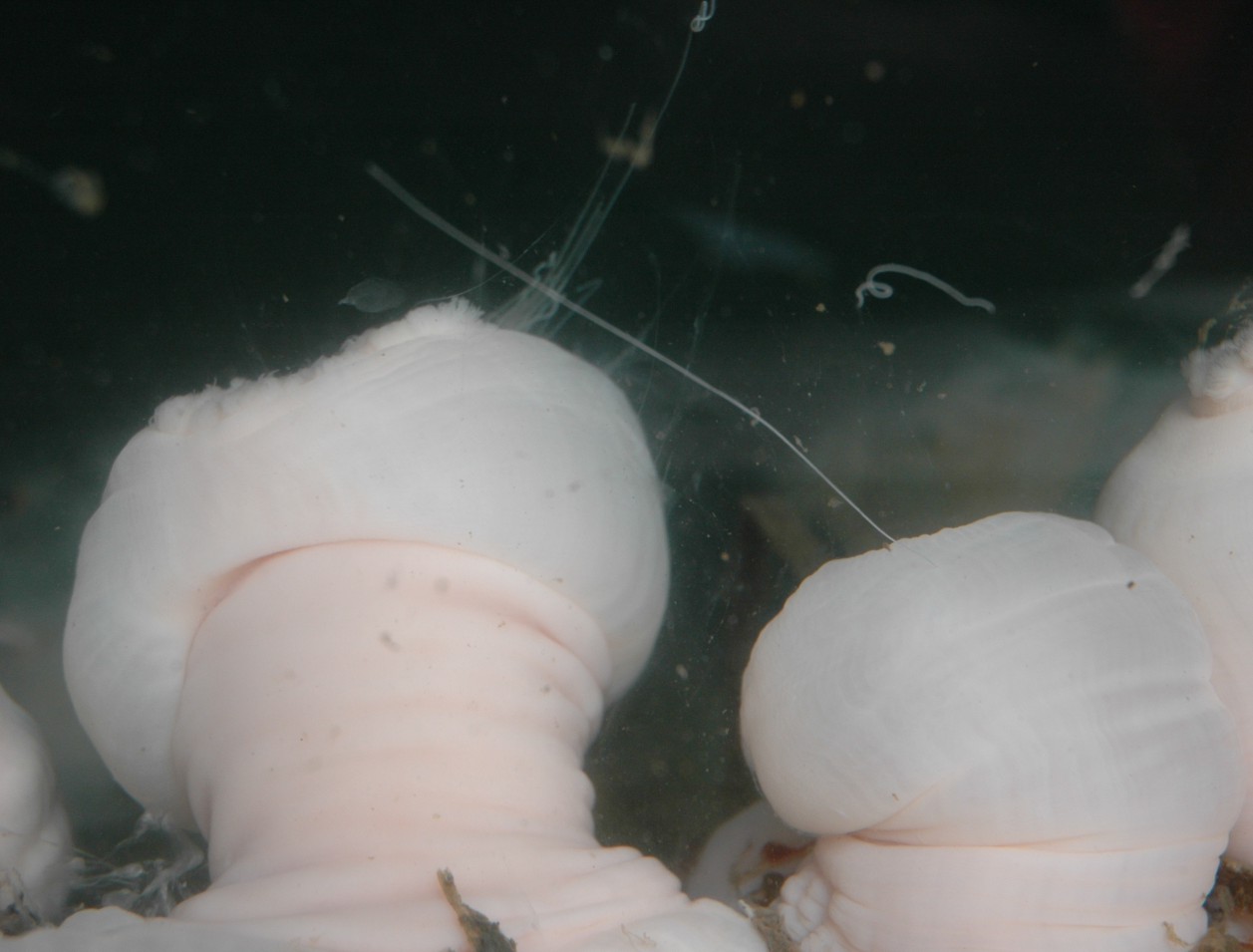
These two individuals have been disturbed and have released threadlike
acontia.
The individual on the left has released the acontia
from the mouth, while the one on the left has released an acontium
from a pore in the body wall.
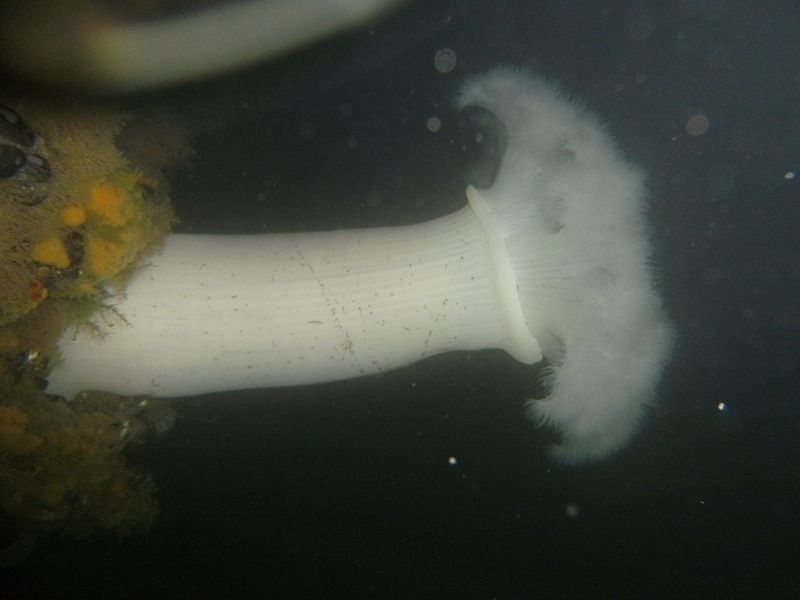
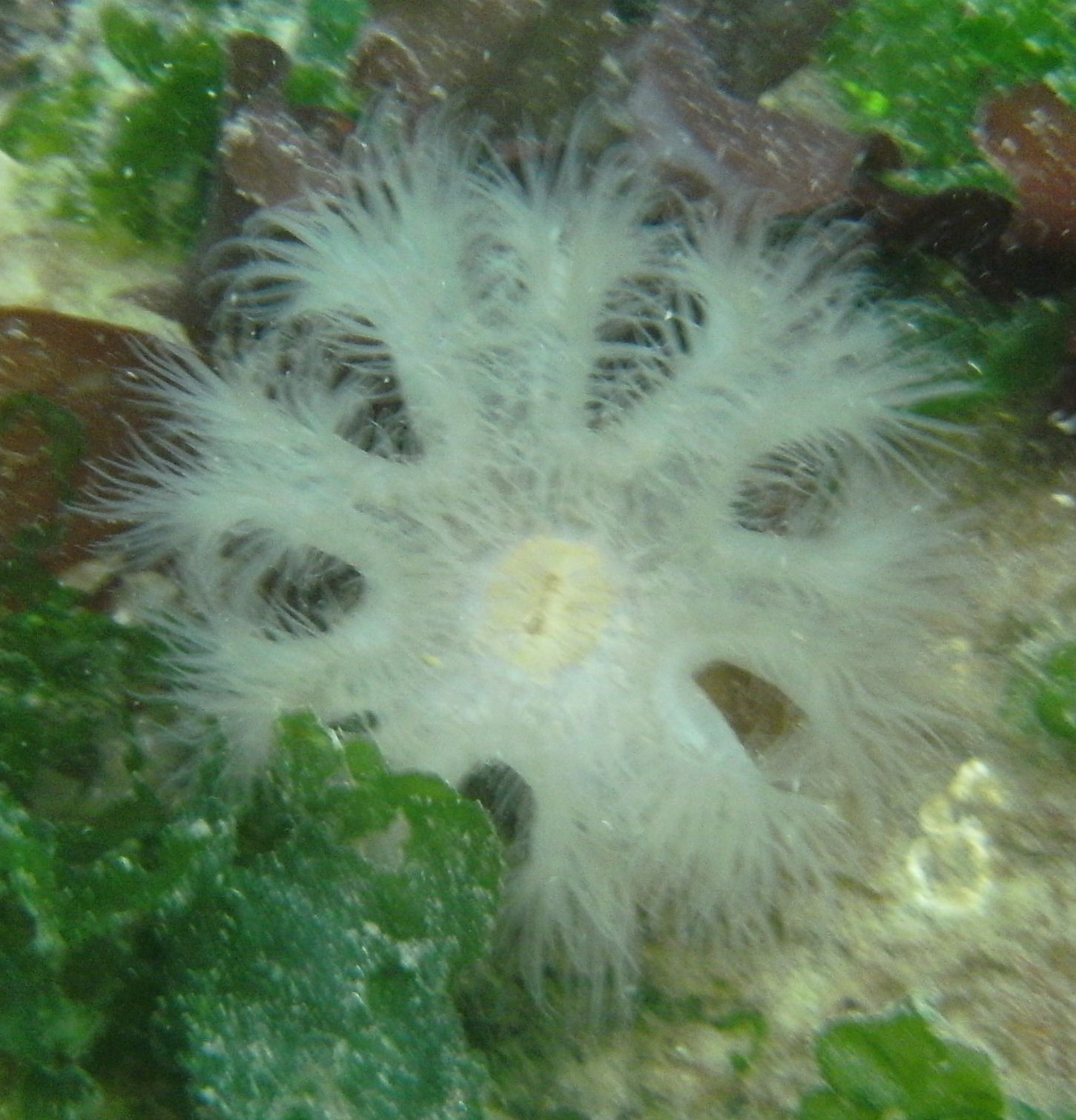
Even small individuals such as this one, about 10 cm tall, have lobed
edges to the oral disk. Photographed at 15 m depth by Dave Cowles 2019
Some individuals are brown in color.
Authors and Editors of Page:
Dave Cowles (2005): Created original page
